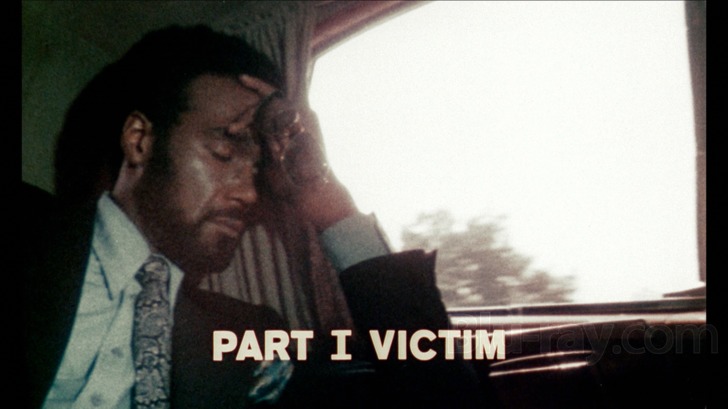The history of Bill Gunn’s 1973 experimental vampire film Ganja & Hess is almost as interesting as the film itself. It premiered to a standing ovation at the Cannes Film Festival, but was subsequently sliced up by its producers due to poor box office and the objection that the film didn’t conform to the low-budget Blaxploitation style that audiences and producers expected. The original cut survived in a print at the Museum of Modern Art, and only recently had a proper release on Kino Lorber. It’s now streaming on Shudder and Kanopy and is a fascinating reminder of the uniqueness of horror as a tool with which to dissect social problems.

The film actually opens with a brief explanation of the basic plot, and then goes on to show it: Dr. Hess Green (Duane Jones), an anthropologist doing research on an African society of blood drinkers, invites his assistant George (Bill Gunn) to his lavish mansion for the night. George stabs Hess with an infected ceremonial dagger, transforming him into a vampire with an insatiable craving for blood. Hess begins prowling the streets searching for victims to satisfy his craving, and not long after receives a call from George’s wife Ganja (Marlene Clark), with whom he falls in love.
But a synopsis does not really do Ganja & Hess justice. This is no lurid, low-budget vampire flick, but a slow meditation using vampire lore as a vehicle to discuss issues of addiction, schizophrenia, violence, and assimilation. Hess’s descent into blood lust is always indicated by the sound of a woman chanting in an African language, a reference to the Myrthians, the blood drinkers that he’s been studying. Vampirism becomes both a callback to older rituals and belief systems, and a metaphor for the cyclical nature of addiction. Blood is associated with sex and desire, drug addiction, and with religion itself, as the film draws direct parallels between the Christian emphasis on Jesus’ blood, the sacraments, and vampirism.
Hess can’t help his desire for blood, but he tries to deny it, and becomes violent as a result. The film can be read from multiple angles, that Hess’s attempts to reject his vampirism are also a rejection of his ancestry for the forms of organized religion; that his vampirism is in direct parallel to drug addiction, something that not even Hess’s wealth can protect him from; that his wealth itself is a form of vampirism, as he primarily preys upon those at the outskirts of society (and coincidentally, those most often focused on in Blaxploitation films), including prostitutes and pimps; and that vampirism is a form of revenge against a society that will always treat even the wealthiest, most well-educated black man as a threat. The introduction of Ganja late in the film also alters the conversation, as the film deals with her presence as a powerful black woman who finds love and an openness of expression via vampirism. But any reading of Ganja & Hess will be altered by its other elements, turning it into a multifaceted narrative with no single interpretation. It is, in other words, a film lover’s dream.
Ganja & Hess does bear some resemblance to Blaxploitation films, with the grainy texture of its images, the use of African tribal imagery, bright, paint-like blood, extended sex scenes, and open nudity. But Gunn’s camera dwells on the beauty of these images, rather than using them for lurid excitement—whether by accident or design, he’s creating a new kind of artistic expression out of imagery that had been used to titillate and exploit, a sort of pushback against the producers who wanted him to make a “black vampire movie.”
Ganja & Hess won’t be for everybody—it’s a slow film, with a plot that’s only barely adhered to as a mode of exploration and experimentation. It doesn’t always feel coherent or clear in its project, and the sound design means that the dialogue can be difficult to follow or even hear. But it’s fascinating nevertheless, a seminal entry into 1970s cinema, and a unique understanding of vampirism that takes it beyond the lurid.
Ganja & Hess is available to stream on Shudder and Kanopy.

DameStruck: Da Sweet Blood of Jesus (2015) – Citizen Dame
[…] Last week I talked about Ganja & Hess, Bill Gunn’s influential “black vampire movie.” This week, we’re going to talk about Spike Lee’s 2015 remake of the film, now available on Kanopy and Vudu. Da Sweet Blood of Jesus takes the basic plot of Ganja & Hess, its concerns about addiction, racial identity, and religiosity, and shifts the conversation to focus on the relationship between race, classism, and gender. […]